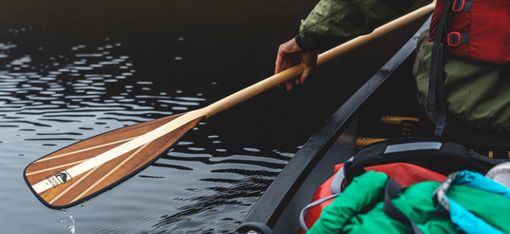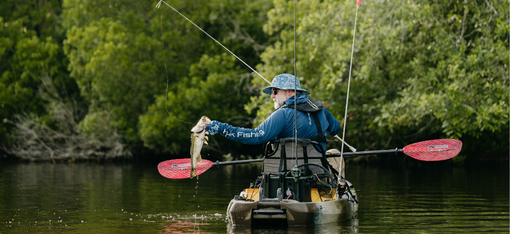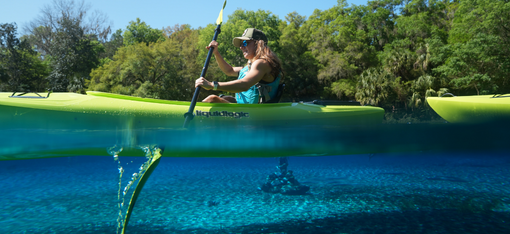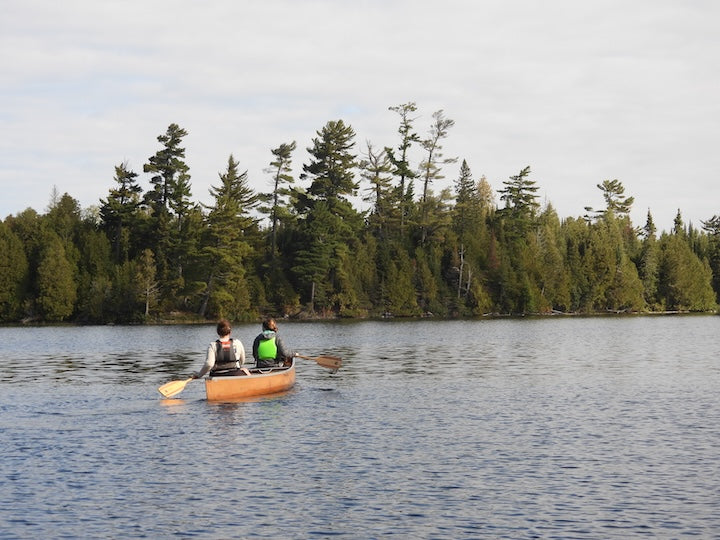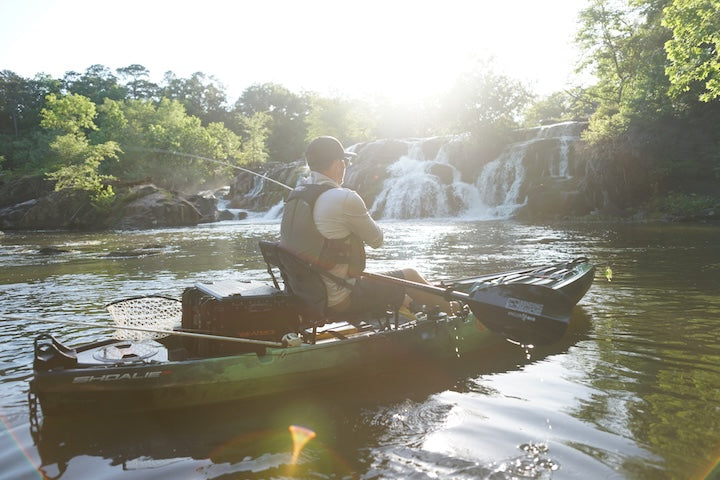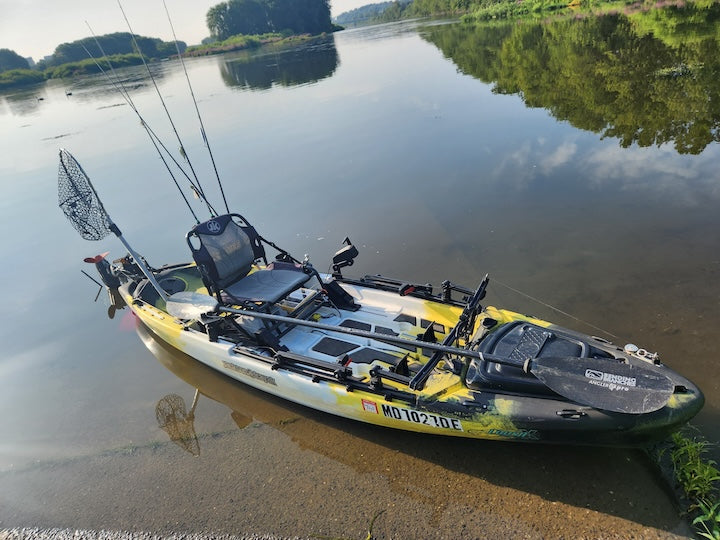Solo Canoeing Yellowstone’s Backcountry

A mirror-like Shoshone Lake in Yellowstone's backcountry
“The novelty of paddling within an active volcano on a high elevation lake made my trip into Shoshone a unique paddling experience.” ~ Jim Gallagher, wilderness canoeist
Canoeist Jim Gallagher has several decades of wilderness paddling experience behind him. He started canoeing the Boundary Waters as a college student back in the late 70s, and then decided to head above the Arctic Circle beginning in 1992. He’s since done 21 trips in the far north.
So what was the draw for him to bring a solo canoe and his backcountry gear to Yellowstone National Park for a few days?
What Makes Canoeing in Yellowstone Different?
Jim liked the idea of both the high-elevation alpine setting and the uniqueness of canoeing on lakes that sit in North America’s largest active volcano, the Yellowstone Caldera.
Yellowstone, America’s first national park, has 2,500 miles of streams and rivers, and more than 600 lakes and ponds in its almost 3,500 square miles. But most of the rivers are closed to boating, and just two of the lakes—Yellowstone and Shoshone—offer paddle-in campsites.
Jim set his sights on Shoshone Lake, beginning at the landing on Lewis Lake, then upstream on the Lewis River.
For a man who regularly takes month-long canoe trips of 200+ miles, Jim’s 40-mile 3-day backcountry solo trip was little more than jaunt. Even so, he was pleasantly surprised when Shoshone Lake treated him to glass-like conditions for his solo paddle. And he enjoyed one of the park’s geyser areas all by himself, as it was far removed from the more popular basins along the roadways.
You can read all the details about his Yellowstone trip in this article he wrote for canoeing.com. Along with the story of his trip, he talks about the gear he used, including his Bending Branches Impression Solo paddle.

Jim's backcountry canoe outfit
Why Use a Double Blade Paddle on a Solo Canoe Trip?
Jim mentions he’d used exclusively single-blade, traditional canoe paddles for all his canoe trips up to his Yellowstone trip.
(He loves the Cruiser Plus 11, a paddle that’s made several trips into the Arctic, and Aqua Bound’s take-apart Edge whitewater canoe paddles.)
But for this solo trip, he decided to try a double bladed paddle: “The big lakes in Yellowstone have the reputation of quickly going from glass calm to a 3 foot roll in a wind. It seemed like there could be an advantage to using a double bladed paddle—for speed and for maintaining forward momentum in the wind.” (source)
In the end he didn’t face wind, but was glad to be prepared anyway. He was pleased with the performance of the Impression. He switched to his Edge canoe paddle in the river sections.
About using Bending Branches paddles he says, “I really like equipment that works and that lasts. My Bending Branches bent shaft is my primary paddle for flatwater. I got that back in the 90s and it’s still a great paddle. I take care of my equipment, and the Bending Branches paddles are easy to take care of.”
Tandem vs. Solo Wilderness Canoe Trips
We asked Jim about his preference between paddling with others or paddling solo. Here’s his take:
“I mostly like to be with other people. But it’s always better to paddle than not, so if I can’t find a partner I like to have some options. I own a couple solo canoes and have done some solo trips in the Boundary Waters and in Yellowstone. It’s fun. It pushes me to be a little more thoughtful and self-reliant.
“But I enjoy paddling with other people more. I tend to always be on guard when traveling solo, so there’s no mental break. 4-5 days of that is good. But I have no interest in going on a really long trip alone.”

Jim Gallagher in the backcountry of Yellowstone National Park
(All photos courtesy of Jim Gallagher)
What paddle questions can we help you with? Contact our friendly Customer Service team today: 715-755-3405 • [email protected]
More for you...




